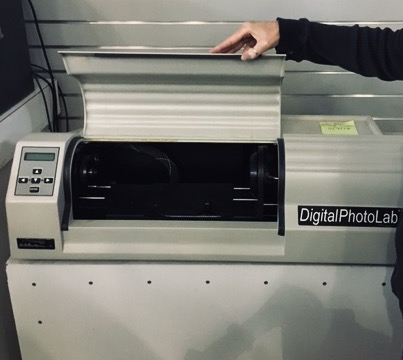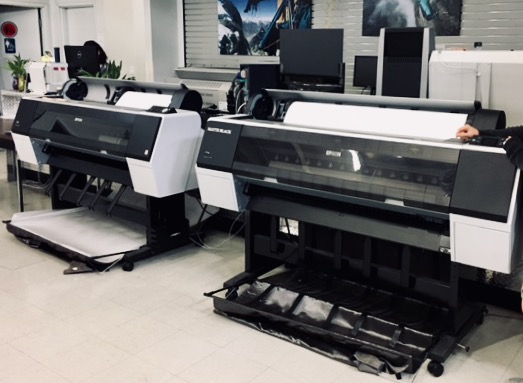What Makes William Corey Prints So Special
The contemporary fine-art photo printing process is a collaborative effort akin to the woodblock printing process used during the Edo-era in Japan, where three artisans — the painter, carver, and the printmaker — worked together to produce the finest prints. The latest in digital photographic printmaking also requires a team of specialists coming together to create a final work of art.

William first captured the images on 8×10″ chromes (positive slides, E-6 color transparency film process) using the large format 8×10 and an ultra large-format Korona Panoramic 8×20 view camera. These provide the most detail and information possible in any photographic capture format. He then carefully selected the films to be printed.
The films are then drum scanned. Drum scans are fluid mounted and scanned in 16-bit color. Drum scanners capture the subtle details from the original films and are capable of very high resolutions, creating a very large digital file for enlargement. No digital camera can capture this amount of information and allow for enlargement with such precision and detail.
The scanned raw files are transformed into color-accurate, custom-made digital files using Photoshop. This sensitive process is extremely important, for the raw data is refined and fine-tuned to create the exact scene the photographer visualized at the time the image was made.
LightJet Prints

After these steps, the refined digital files are transferred and printed directly through the LightJet Custom Printing process onto Fuji Crystal Archive photo paper with Helium-Neon and Argon-Ion lasers. The lasers expose the photosensitive paper in 36-bit color in the Red/Green/Blue spectrums with an apparent resolution of 4000 dpi. The LightJet is accepted as the state-of-the-art in photographic printing throughout the industry. All materials used for these purposes are archival and meet the highest industry standards.
We have been working with Photocraft Imaging, a professional photo lab in Boulder, Colorado, for many years. William maintained an intimate working relationship with them when he was alive. Supervision of the files and prints is now overseen by his wife Reimi Adachi. These “digital originals,” which contain a massive amount of information, go through an extensive proofing and refining process so that William’s original vision comes to life in each and every print.